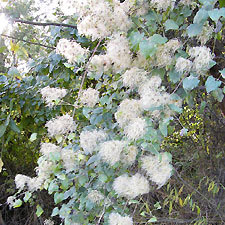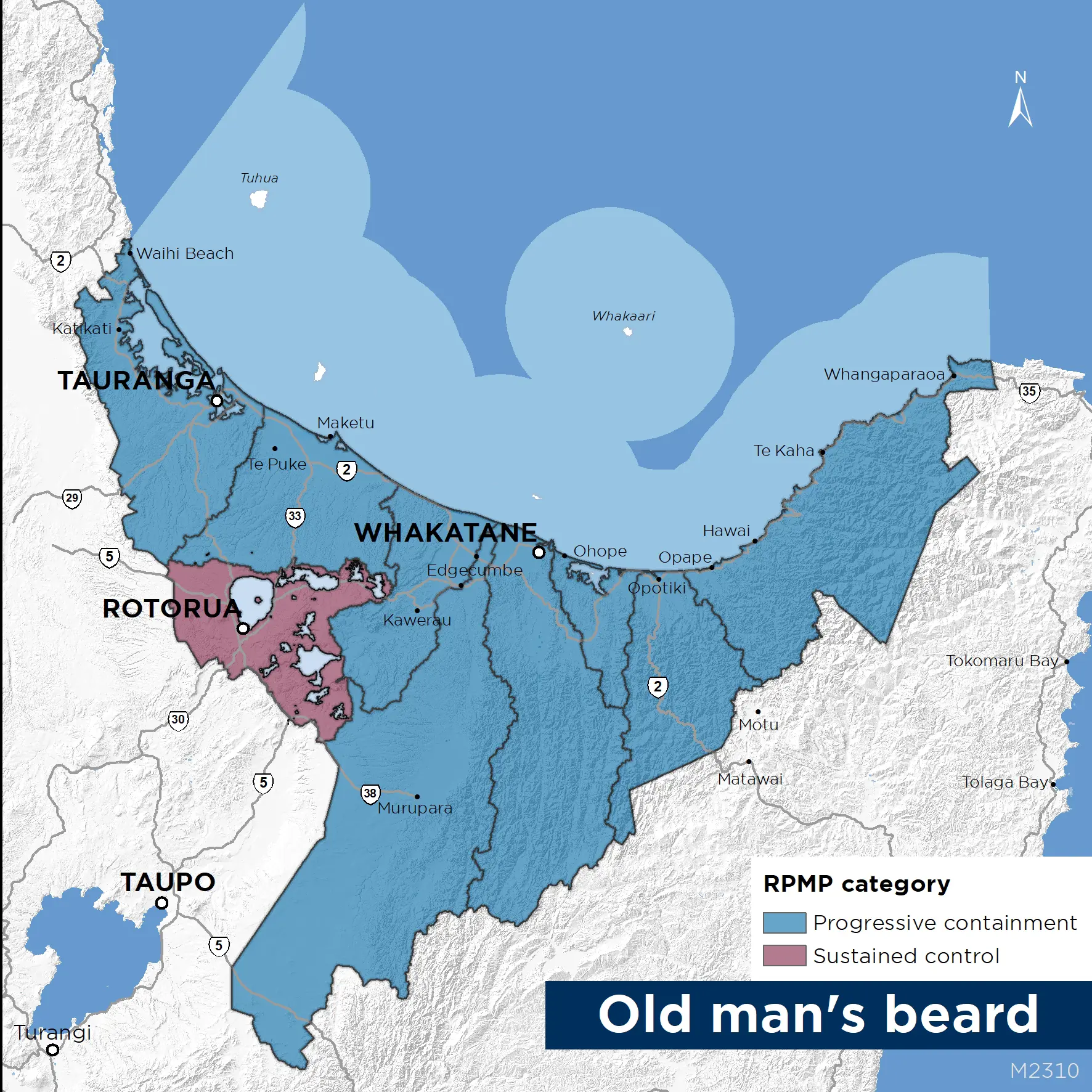 Old man’s beard
Old man’s beard
Common name: Old man’s beard
Botanical name: Clematis vitalba
Management programme: Progressive containment, Sustained control
Named after its seed clusters that look similar to an old man’s white woolly beard. Originates from Europe and was introduced to New Zealand in the early 1900’s.
Why is it a pest?
- Old man’s beard smothers and kills all plants to the highest parts of the canopy, and prevents the growth of native plant seedlings.
- It can grow quickly producing up to 10m of growth in just one season.
Where is it found?
- Old man’s beard can grow almost anywhere. It tends to be found in bush, pine forests, shelter belts and gullies.
- It thrives in the shade and is frost tolerant.
- It’s mainly wind dispersed; but seeds don’t tend to travel far. Seeds can also be dispersed by water, birds and by people through illegal dumping of garden waste.
- The most infestations occur within Rotorua, particularly around the Lake Tarawera settlement. It is also present in Te Puke, Tauranga and Whakatāne.
What does it look like?
- Old man’s beard is a large woody climbing vine growing up to 30m tall.
- Compound leaves with five oval leaflets.
- Its flowers are small greenish white, fragrant, and occur in clusters.
- Its fluffy grey seed heads are noticeable autumn through to winter.
- Old man’s beard is often mistaken for the NZ native clematis. There are several ways to differentiate between the two:
- Old man’s beard flowers in summer (December to February) whilst native clematis flowers in spring.
- Old man’s beard loses its leaves in winter whilst native clematis is evergreen.
- Old man’s beards leaves occur in leaflets of 5 whilst the native clematis always has three leaflets.
- Old man’s beard young stems are reddish with 6 ribs running along them whilst native clematis has smooth stems.
What are the rules?
Old man’s beard is sustained control in the Rotorua district and progressive containment throughout the rest of the Bay of Plenty. This means that landowners/ occupiers are responsible for its control throughout the Bay of Plenty. However, in the Rotorua district occupiers/landowners must control Old man’s beard within 10m of any property boundary where the adjoining occupier is also controlling it or if directed by an authorised person. Please refer to the map on this pager to determine which rules apply to your area.
Progressive containment
Progressive containment species are pests which the council aims to prevent from spreading, reduce the distribution, or eradicate within parts of the region over time. Landowners or occupiers are responsible for the control of progressive containment species on their property. Council may enforce the control of these pest species.
Sustained control
Sustained control pests are well established in the region and preventing the spread is no longer a realistic objective. Management focuses on reducing general impacts of the pest. Landowners/ occupiers are responsible for the control of these pest species on their land. Council may enforce control.
How do you get rid of it?
Recommended:
- Stump treatment
- Stump treat from November to March when the plant is in its active growing phase
- Ensure hanging vines don't come into contact with the ground, as re-growth may occur
- Following treatment vegetation should start to wilt within a few days. Where there's no wilting, start at the live foliage and work back to check for vines you may have missed
- Once treated vines can be left in the tree to breakdown naturally
- Spraying
- If vines are difficult to trace back to the roots this method is recommended
- Spray November to March
Follow up treatment will be required.
CAUTION: When using any herbicide or pesticide, PLEASE READ THE LABEL THOROUGHLY to ensure that all instructions and directions for the purchase, use and storage of the product, are followed and adhered to.
Read more on pest control advice, information and regulations.
Images












